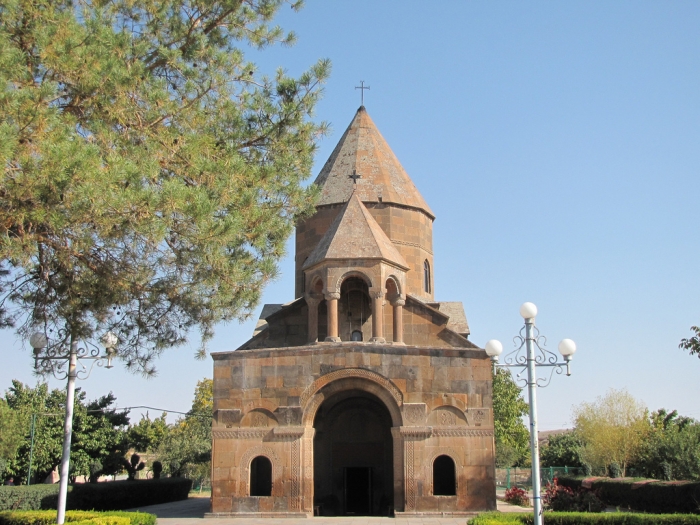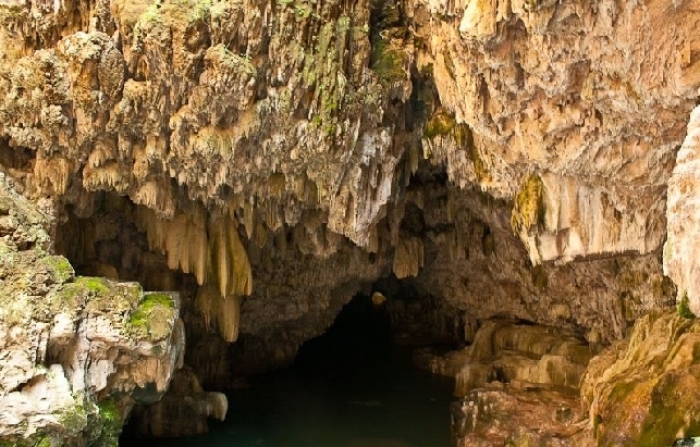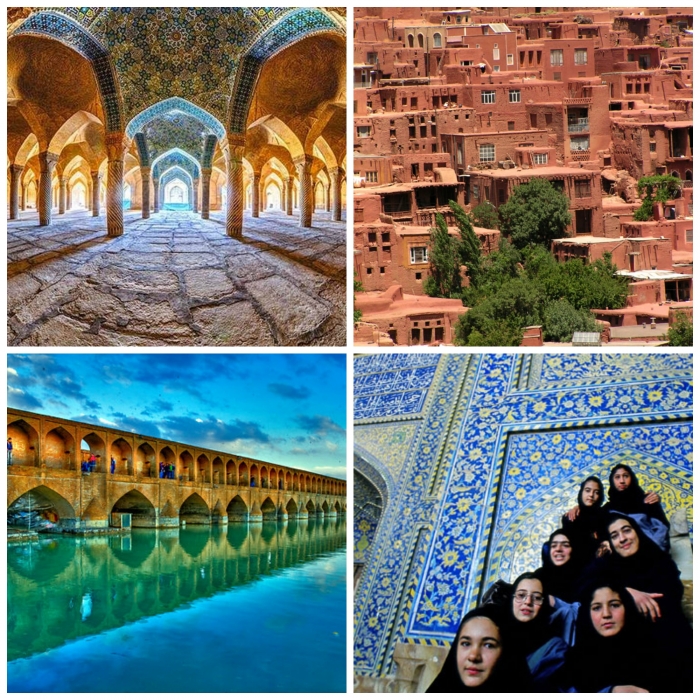Art, Archaeological & Cultural Tour
Book
0 comment
Duration-8 days, 7 nights|Art, Archaeological & Cultural|Meal Plan-BB|Accommodation-Toursit Hotels|
Art, Archaeological & Cultural Tour 8 Days from 404 EUR
Day 1. Arrival in Yerevan.
Meeting and greeting at the airport. Transfer to hotel. Check-in assistance. Overnight in Yerevan.
Day 2. Yerevan- Etchmiadzin-Mother Cathedral – Metsamor – Zvatnots-Yerevan
Breakfast at the hotel and drive to Etchmiadzin city, the spiritual center of Armenians. The city has the oldest cathedral in the world, the Mother Cathedral of Etchmiadzin, the traces of which date back to the 303. On the spot there used to be a pagan temple the ruins of which still survives hidden under the cathedral's altar. Whole of the Etchmiadzin city, the former Armenian capital Vagharshapat, is protected by the UNESCO World Heritage Sites.
Continue the tour to the Metsamor archaeological site, one of the most impressive prehistoric monuments in Armenia. Situated 25 km from Yerevan, Metsamor is essentially a Bronze Age city dating back to the 3rd and 2nd millennia BC. It's was time when copper mining took place on a major scale and was a major source of bronze production. It was a major site during Urartian Kingdom as well as during middle ages. The museum erected in 1970s houses archaeological items from the site. You will find a row of huge standing stones outside called 'vishapaqar' that is 'dragon stone', that depict the pagan culture in Armenia.
On our way back to Yerevan we will stop at Zvartnots Cathedral (7th century), the spot where Trdat the Great and Gregory the Illuminator first met after Gregory was set free from 13 years of imprisonment. The cathedral served as the main one between 641-661 and its Byzantine architectural inclination is even different than that of initial Byzantine ones. The ruins were covered under the ground until the beginning of the 20th century. Due to further excavations it was revealed that Zvartnots ruins stand on the remnants of Urartian structures. Drive back to Yerevan. Dinner and overnight in Yerevan.
Day3. Yerevan City Tour -Yerevan
After the breakfast we start the tour in one of the oldest continuously inhabited cities in the world, the nowadays capital city Yerevan. Yerevan has her birth certificate as 782 BC when the Urarian king Argishti the 1st strengthened the eastern parts of his kingdom by founding the Erebuni fortress. Drive to the upper Yerevan district and the Victory Park where the overall panorama of Yerevan can be seen in all of its beauty. In the Victory Park there is the magnificent Mather Armenia Statue signifying the peace through strength. The symbolism goes with Armenian brave women and mothers always standing beside their husbands during millions of wars fought.
Walk down the stairs of Cascade Complex that is unique structure itself connecting upper and lower parts of Yerevan. The structure is a part of the general plan of the city given by the architect Alexander Tamanyan. Visit the Cafesjian Art Museum that is dedicated to bringing the best of contemporary art to Armenia and presenting the best of Armenian culture to the world. It houses collection of more than 5,000 works, including one of the most comprehensive glass collections in the world.
Visit History Museum of Armenia located in the main Republic Square that was erected as a part of the general plan to the city in 1924. The national collection of the museum covers 400,000 items of Archaeology, Numismatics, Ethnography, Modern History and Restoration. We will also visit the National Art Gallery of Armenia that houses significant collections of Russian and Western European art, and the world's largest collection of Armenian art. Dinner and overnight in Yerevan.
Day 4. Yerevan – Dvin –Areni -1 Cave – Noravank-Tatev-Karahunj- Goris
Breakfast and check out from the hotel drive to the Ararat Region named after the Biblical Mount Ararart that stands high as you driving along the strategically important highway connecting Iran with Armenia and Georgia. We will visit Dvin archaeological site, a former commercial and capital city of the early medieval Armenia. The site has systematically been excavated since 1937, due to which light was shed into the Armenian culture of the 5th to the 13th centuries.
Continue the tour to the south of Armenia to the Vayots Dzor Region, where our first stop will be at the archaeological site of Areni – 1 cave complex where a 6100-year-old winery was discovered in 2007 by Armenian and Irish archaeologists. The winery consists of fermentation vats, a wine press, storage jars, pottery shreds, and is believed to be at least a thousand years older than the winery unearthed in the West Bank in 1963, which is the second oldest currently known.
Drive through narrow Noravank Canyon known for its tall, sheer, brick-red cliffs that will take us high to the top of the hill where Noravank Monastery (13th century) is located.The monastery is well known for its two-storied mausoleum-church with narrow star ways taking to the second floor from the facade of the building. The monastery complex is unique with the stone it has been made of, as there are a few of them made out of limestone.
Continue driving to the most southern region of Armenia, Syunik that is home to the treasure historical, archaeological and cultural treasures of Armenian. Visit Tatev Monastery (9th century) by taking world's longest cable car that is called 'Wings of Tatev'. Here we will get to know about the developed educational system of the Medieval Armenia. Grigor Tatevatsi an Armenian Medieval scholar founded the University of Tatev in this place that had more than one thousand students living and studying there. Before driving to the city of Goris stop at the Armenian Stonehenge that locals call Karahunj or Zorats Qarer. As of being an observatory site the significance of the monuments is still disputed but the fact goes with that it dates back to the sixth millennium BCE. Drive to Goris city. Check-in the hotel, dinner and overnight in Goris.
Day 5. Goris-Khndzoresk- Ughtasar Petroglyphs (optional) -Jermuk
Breakfast at the hotel, check-out and continue the tour to the Old Knhdzoresk medieval dwellings that is that is a spectacular place for hiking. Most of the caves are man-made hewn in soft rock. In the place you will find ruins of old villages, churches, tombs, springs and a new bridge that connects the gorge. To see one of the less known places and archaeological sites in Armenia there is an optional visit on jeeps to Ughtasar Mountain of ancient petroglyphs which are between four and seven thousand years old. The rock carvings spread all over the valley are a unique source for studying ancient culture.
Continue the tour to the spa mountain town of Jermuk in Vayots Dzor Region, once a popular destination during Soviet era and famous nowadays as well. The city boasts in hot springs and mineral waters with water brands bottles in the town. We will have a city tour to breathe the fresh air of the city and visit the Water Gallery of natural mineral waters the come out of pipe with different natural temperatures.
Next we will visit the famous Jermuk Waterfall that is 72 m high from the sea level and flows into the river Arpa. The waterfall reminds girly hair. Hence the other name of the waterfall: mermaid's hair. According to the legend, the Armenian nobleman’s daughter was so beautiful that men from all over the world came to ask to marry. She denied all as her heart already belonged to the shepherd's son who was brave and handsome. Every night the girl was throwing a long rope down the castle so that her lover could climb up in order to meet her. Learning about their date every evening, the nobleman curses his daughter in anger by saying if she meets him again, he wants his daughter to become a mermaid and never come out of water. Next time the girl threw her hair instead of the rope and at that time the father's cures came true: the girl became a mermaid and her hair the waterfall. Check-in in the hotel, dinner and overnight in Jermuk.
Day 6. Jermuk –Selim Pass (Caravansarai)- Noratus – Sevanavank – Dilijan – Goshavank- Haghartsin- Dilijan
After the breakfast at the hotel check-out and drive to the Region of Gegharkunik by crossing Vardenyats (Selim) Mountain Pass that joins the Basin of Lake Sevan. As a commercial route in 1332 they built a Caravanserai on the place, which is the best preserved on in the territory of Armenia. Orbelian's Caravanserai is a bright example of Armenian medieval secular architecture. Continue to drive to the village of Noratus where the largest existing Armenian medieval cemetery is situated. Noratus cemetery (10th-17th centuries) is the largest cluster of khachkars (cross-stones) in the territory of Armenia that has its legends and tales passing generation to generation. Drive to the Sevan Lake (one of the highest sweet water lakes in the world) where on the former island nowadays peninsula, the monastery of Sevanavank (9th century) is situated. Once as considered only for monks it has still an active seminary living on the peninsula. Continue the tour to Dilijan in the Region of Tavush that sometimes is called 'Armenian Switzerland'.
After visit the Monastery of Goshakavank (12th-13th century) that house one of the brightest example of a khachkar (cross-stone). The first Armenian criminal code was written here by the Armenian scholar and scientist Mkhitar Gosh. The place is also unique for a ruin of cyclopean wall or construction that served as a medieval school. By paving the green road continue the tour to another hidden sight where the lime stone Monastery Complex of Haghartsin (10th-14th centuries) strikes in its all beauty. As the legend goes, the name as Haghartsin was given by a monk that was considering a place where the monastery should be constructed. After spotting the right site he saw two eagles (eagle-‘artsiv' Armenian word) playing (play – 'Khakh' Armenian word) on the place. Accordingly he named the coming monastery as Play of Eagles (Hagh 'khakh' artsin). Dining rooms were not preserved as it is with churches, but Haghartsin Monastery complex has one of the impressive examples of monastery dining rooms still existing on the place. Drive to Dilijan, dinner and overnight.
Day 7. Dilijan–Sanahin- Haghpat – Armenian Alphabet Monument- Agarak Settlement- Yerevan
Breakfast at the hotel, check out and drive to the Region of Lori which has the largest population in Armenia and is home to some of the impressive Armenian landmarks. In Lori visit Sanahin Monastery (10th century) in the same name village, situated on a high plateau. Founded by Tashir-Dzoraget Armenain Kingdom, it was favored institute for studying medicine and humanitarian studies, as well as creating manuscripts, paintings. Continue the tour to another medieval architectural treasure in Armenia, Haghpat Monastery Complex (10th century). Sanahin and Haghpat are rich in cross-stones; one of the unique khachkars (cross-stones) that locals call all-savor khachkar is situated in the monastery, which was a pilgrimage site for those who those who needed healing of the soul and body.
Continue the tour to the Region of Aragatsotn, where the highest pick of Armenia Aragats (4090 m) is located. Visit the Armenian Alphabet Monument which is as old as 2005. The park is located at the slope of the mount Aragats, in Artashavan village. To celebrate the 1600th anniversary of the invention of the Armenian Alphabet, the monument was founded to signify its importance for the Armenians.
Visit Agarak, an early Bronze Age settlement located in on west side of the Amberd Canyon in the Aragatsotn Region. The site has some of the oldest structures that are man-made and carved into stone. Most significantly, already in the Early Bronze Age men built a planned city on this place. The rock-cut stairways, corridors, rock wells and horseshoe-shaped structures are the oldest found in the Caucasus. Drive to Yerevan. Check-in in the hotel, dinner and overnight in Yerevan.
Day 8. Breakfast. Check out assistance. Transfer to the airport. Departure.
PRICES PER PERSON IN EUR (NET):
Tour package includes: All transfers by program Tour package does not include: Air ticket
Meet and greet at the airport
Comfortable mini-bus with climate-control system
Professional friendly driver
High-qualified guide-interpreter in the preferred language
Hotel accommodation in 3* Tourist Hotels
7 Breakfasts, Farewell dinner
24-hours tourist support
Visa for entry
Insurance
Entrance fees
Tour to Ughtasar
Lunches
Dinners
Alcoholic drinks
Expenses of personal nature









